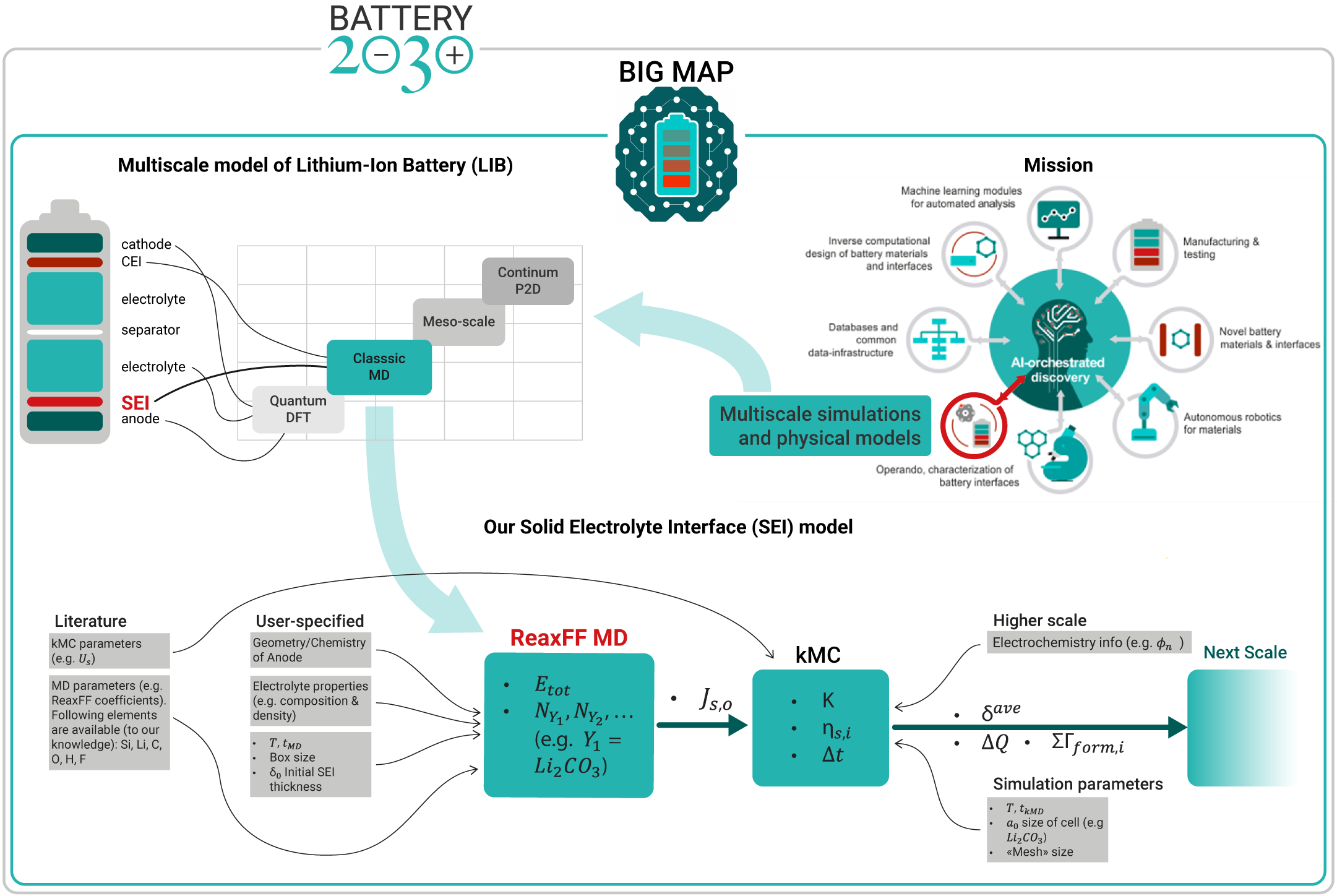BIG-MAP
The Battery Interface Genome – Materials Acceleration Platform (BIG-MAP) project is a part of the BATTERY 2030+ European research initiative aimed at revolutionizing battery innovation through a radical paradigm shift. The goal is to dramatically speed up the battery discovery and innovation time, achieving a 5-10 fold increase relative to the current rate of discovery within the next 5-10 years. This will be accomplished through the development of a unique R&D infrastructure and accelerated methodology that integrates insights from leading experts, competencies, and data across the entire battery discovery value chain. BIG-MAP will use Artificial Intelligence (AI), High-Performance Computing (HPC), large-scale and high-throughput characterization, and autonomous synthesis robotics to reinvent the way we invent batteries. The aim is to develop core modules and Key Demonstrators of a Materials Acceleration Platform specifically designed for accelerated discovery of battery materials and interfaces.
I was involved in the European project in Work Package 3 (WP3), which focus was on developing multiscale models capable of describing materials and phenomena at various resolutions, i.e. from electronic to continuous. Specifically, I worked on characterizing the Solid Electrolyte Interface (SEI), which is a thin passivation layer formed between the anode and electrolyte in batteries. To achieve this, I employed Density Functional Theory (DFT) codes to perform quantum simulations, and then used the resulting interaction data to parameterize the ReaxFF reactive potential, which enabled me to model SEI behavior at the atomistic scale using Molecular Dynamics (MD) simulations.


|
This project has received funding from the European Union's Horizon 2020 research and innovation programme under grant agreement No 957189. |